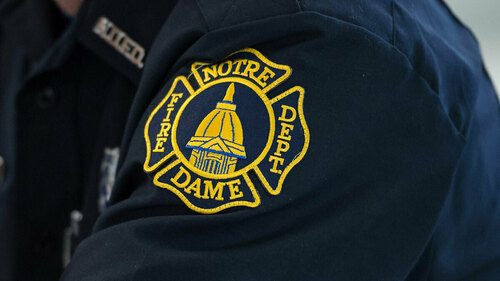
The University of Notre Dame Fire Department will participate in a CPR mass training event from 10:30 a.m. to 2:30 p.m. Wednesday (Oct. 10) at Four Winds Field, 501 W. South St., South Bend.
Hosted by enFocus with support from Saint Joseph Health System, Beacon Health System and Notre Dame, the event will train area eighth-graders in the basics of hands-only CPR as a way to improve survival outcomes for sudden cardiac arrest. The first group of students will train from 10:30 a.m. to noon. The second group will train from 1 to 2:30 p.m.
Nearly 1,600 students are expected to participate in the event in total.
The event, coinciding with Sudden Cardiac Awareness Month, will include information about automated external defibrillators, or AEDs — portable electronic devices that diagnose and treat sudden cardiac arrest — as well as testimonials from survivors of sudden cardiac arrest, a medical emergency and the third-leading cause of death in the U.S.
Students will leave with CPR training kits, allowing them to practice and to train others at home. Research shows that mass CPR training with middle-school-aged children has a multiplier effect. Each child trains as many as 2.5 additional people afterward.
“The Notre Dame Fire Department is pleased to partner with local organizations to create a safer environment for our community,” said Bruce Harrison, Notre Dame fire chief. “By training young people in hands-only CPR, we know that we can increase the survival rate of those in our community who experience sudden cardiac arrest.”
Michael Bogdan, innovation fellow with enFocus, said, “Our goal is to provide CPR training to at least 7,500 eighth-grade students by 2021. This event equips them to become CPR advocates within their own neighborhoods.”
Sudden cardiac arrest is the sudden, unexpected loss of heart function, breathing and consciousness. If not treated immediately, it causes sudden cardiac death. CPR or AEDs can improve the chances of survival until emergency personnel arrive.
For more information, visit savealifesjc.org.
Contact: Erin Blasko, assistant director of media relations, 574-631-4127, eblasko@nd.edu